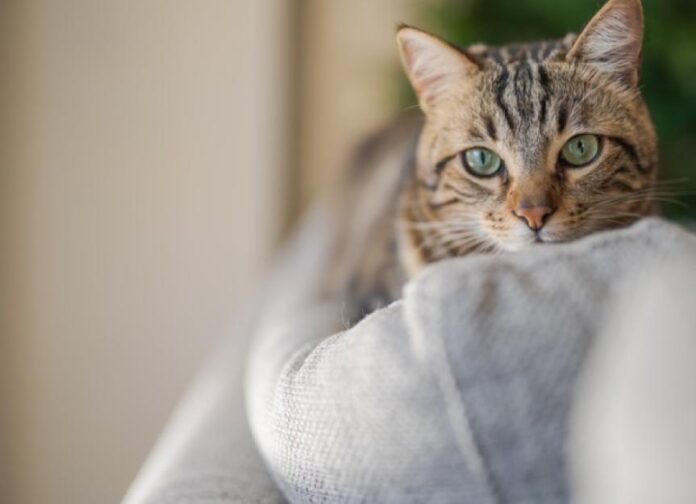Understanding Your Cat’s Sensitive Stomach: A Comprehensive Guide
Do you notice your cat frequently vomiting or struggling with hairballs? It’s important to recognize that hairballs are not a normal occurrence for felines; rather, they are designed to pass ingested hair that results from grooming. Such symptoms could signal a sensitivity to certain food ingredients.
Gastrointestinal (GI) disturbances in cats can stem from poorly digestible foods, food allergies, or additives such as preservatives and flavorings. Often, diets formulated specifically for sensitive stomachs can alleviate these issues. However, it’s crucial to consult your veterinarian before making any dietary changes.
Recognizing Signs of a Sensitive Stomach in Cats
Vomiting can be indicative of various health issues, not solely food sensitivities. Additionally, the act of coughing up hairballs may mimic other conditions like feline asthma. If your cat is vomiting food or hairballs once a month or more, or if you notice signs of weight loss, it’s advisable to seek veterinary care.
Consider capturing video footage of your cat during these episodes to aid your veterinarian in understanding the behavior. During your vet visit, your veterinarian will assess your cat for potential causes of GI upset and may recommend diagnostic tests like blood work, X-rays, or ultrasounds to determine the underlying issues.
Finding the Right Diet for Your Feline’s Sensitive Stomach
Once other health issues have been addressed, collaborate with your vet to identify the most suitable diet for your cat. It’s essential to select food that meets your cat’s nutritional requirements while also aligning with their taste preferences.
Conducting a Diet Trial
Following your vet’s approval, a diet trial is a practical step in discovering the right food for your sensitive cat. Keep in mind that there is no universal diet that caters to all cats; each feline may react differently to various food types. Work closely with your veterinarian to narrow down your options. It can take three to four months to thoroughly assess a new diet as your cat’s system clears out the previous food.
Key Features to Look for in Cat Food for Sensitive Stomachs
The ideal cat food for a sensitive stomach is highly digestible and free from irritating ingredients. Generally, these diets consist of moderate to low fat, moderate protein, and moderate carbohydrates. They may also include beneficial additives that promote intestinal health, such as soluble fiber, omega-3 fatty acids, and antioxidant vitamins, while avoiding gluten, lactose, colorings, and preservatives.
Exploring Hypoallergenic Diet Options
Food allergies can trigger gastrointestinal distress in cats, often stemming from specific protein sources. Your cat may be allergic to any protein they have previously consumed. For instance, while rabbits and chickens are common allergens, if your cat hasn’t been exposed to rabbit, they are less likely to be allergic to it.
Research indicates that proteins like beef, chicken, and fish are the leading culprits of allergies in cats. Therefore, hypoallergenic diets can be particularly beneficial for felines with food sensitivities.
Types of Hypoallergenic Diets
There are three primary categories of hypoallergenic diets:
- Limited Ingredient Diets: Contain a single protein and carbohydrate source, available without a prescription.
- Veterinary Prescription Food: Features novel protein sources while ensuring production in facilities that prevent cross-contamination.
- Hydrolyzed Protein Diets: Require a prescription and have proteins broken down into smaller components that are less likely to be recognized by the immune system.
Additional Solutions for Managing Your Cat’s Sensitive Stomach
Modifying your cat’s diet or feeding routine may significantly enhance their digestive comfort.
Changing the Form of Cat Food
If your cat struggles with dry food, consider switching to a low-carb, higher-protein canned diet, such as Royal Canin® Veterinary Diet Gastrointestinal Moderate Calorie canned food or Purina® Pro Plan® Veterinary Diets EN Gastroenteric Formula. Conversely, if you typically feed wet food, a trial of a dry food diet might be beneficial.
Adjusting Feeding Routines
Cats that consume large meals often experience quick bouts of vomiting—colloquially referred to as “scarf and barf.” With their small stomachs, cats are naturally suited to eat smaller, more frequent meals, resembling their hunting behavior. Transitioning to a feeding routine that mirrors this natural habit can lead to better digestion.
To support this approach, consider using a product like Doc & Phoebe’s™ indoor hunting cat feeder kit. This innovative tool allows you to hide portions of food around your home, encouraging natural hunting behavior while promoting portion control and reducing stress—all of which contribute to minimizing vomiting.
By implementing these strategies and working closely with your veterinarian, you can help your cat find relief from a sensitive stomach, leading to a happier and healthier life.











